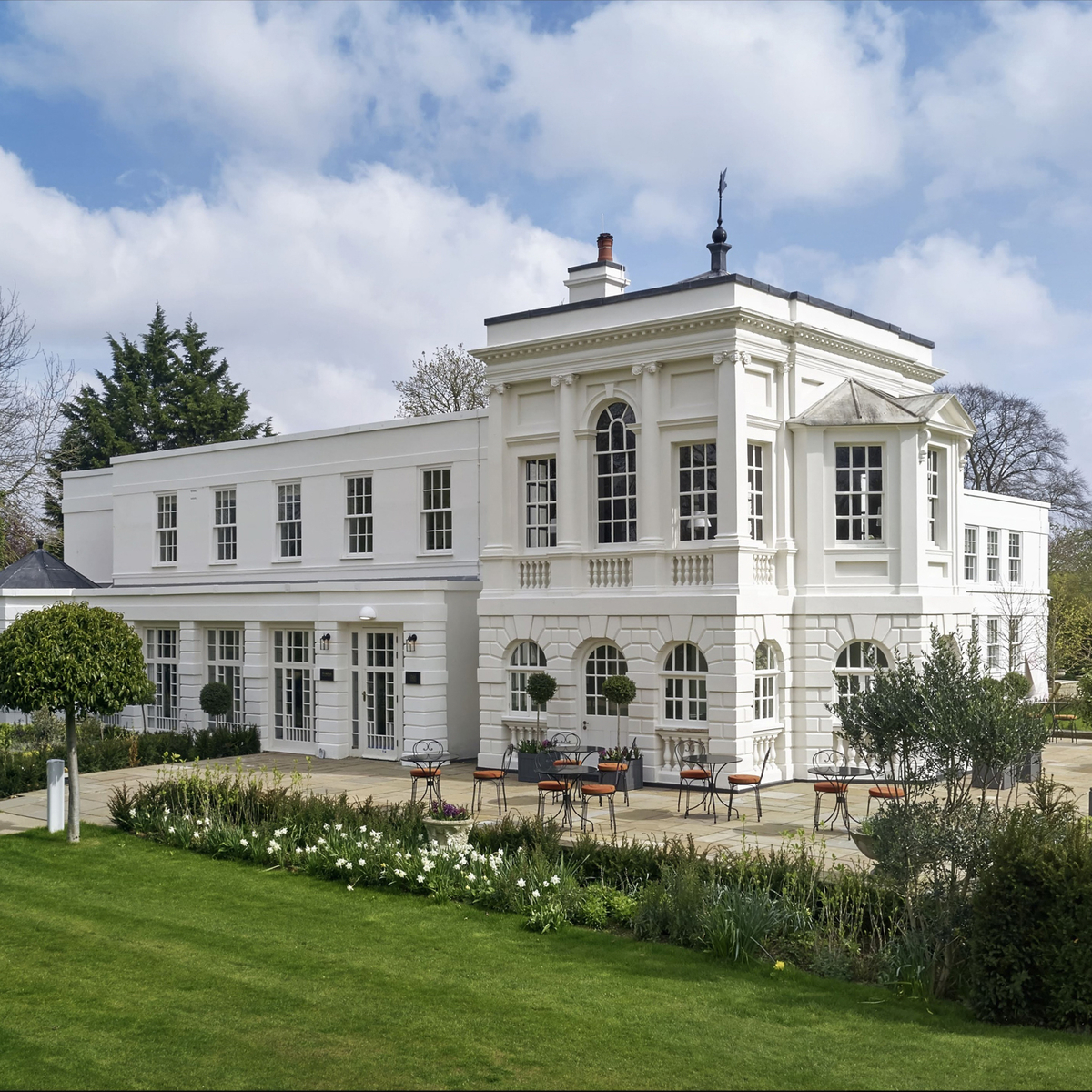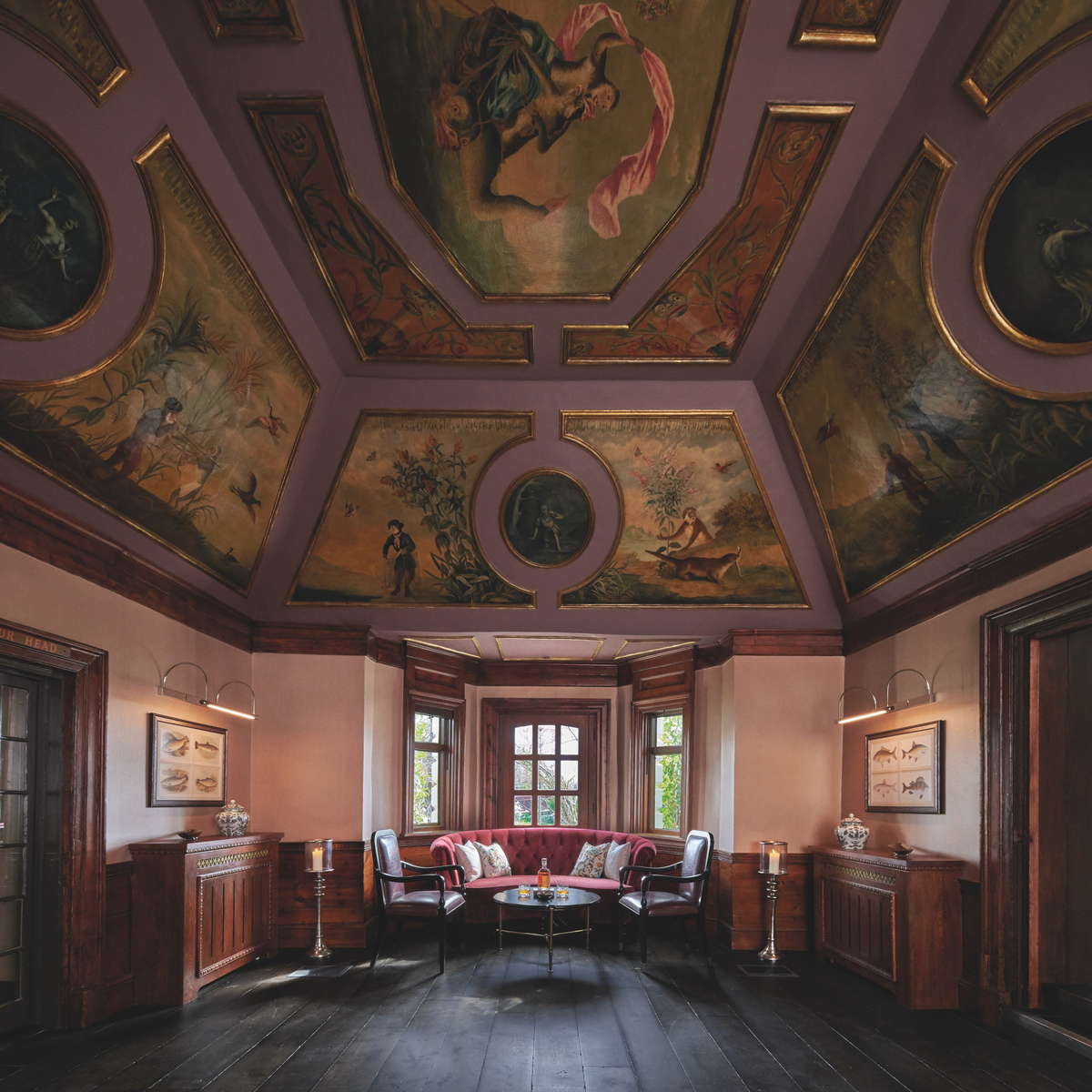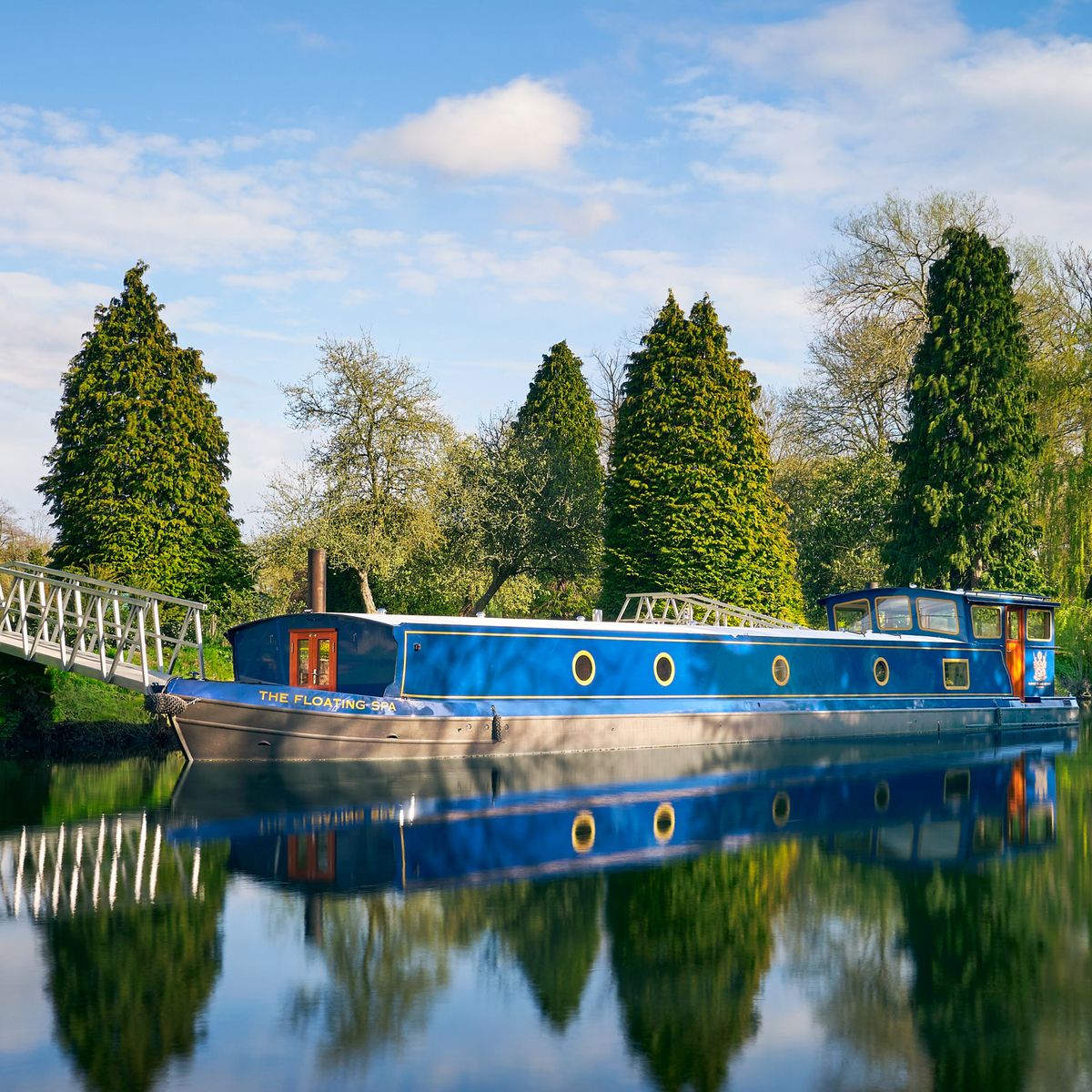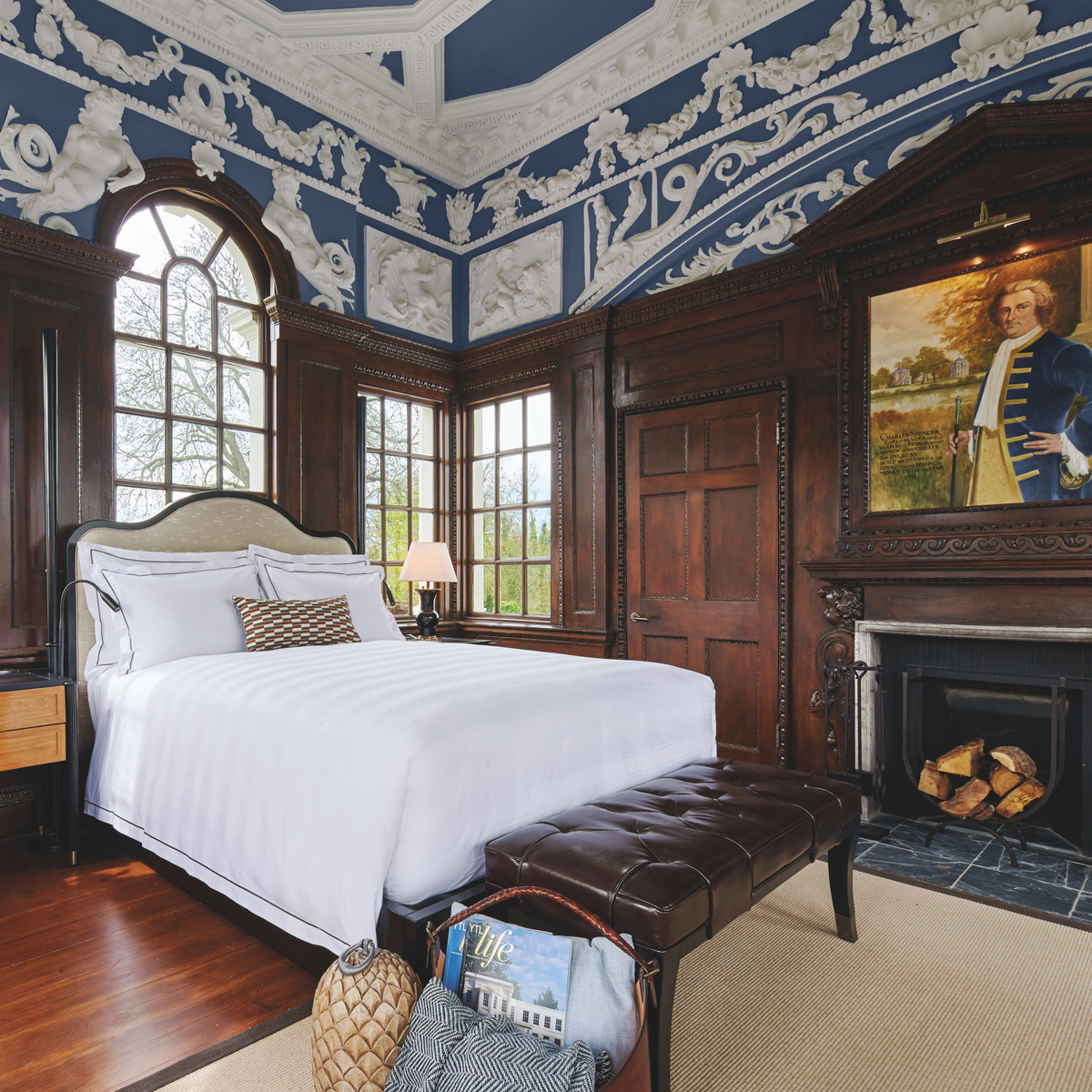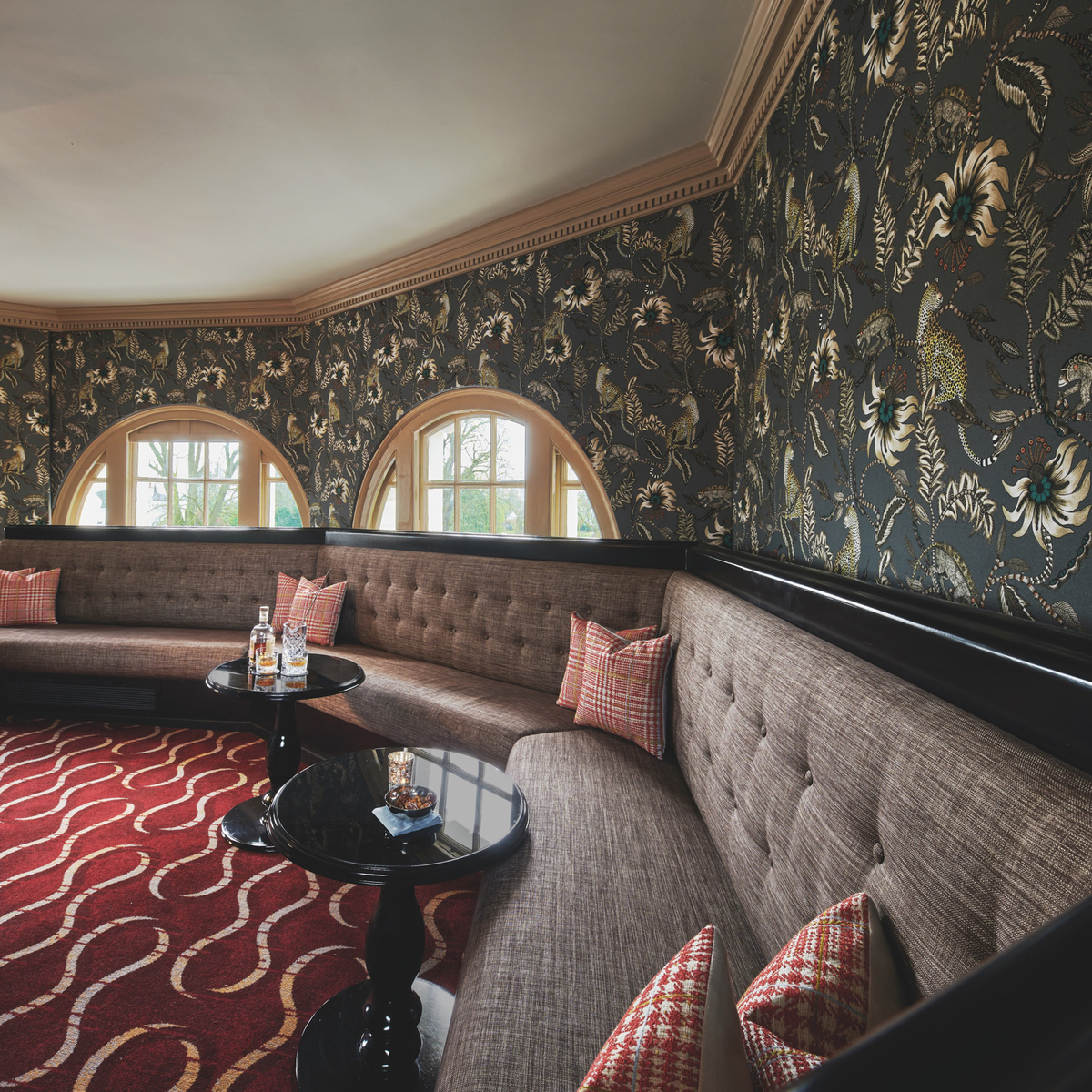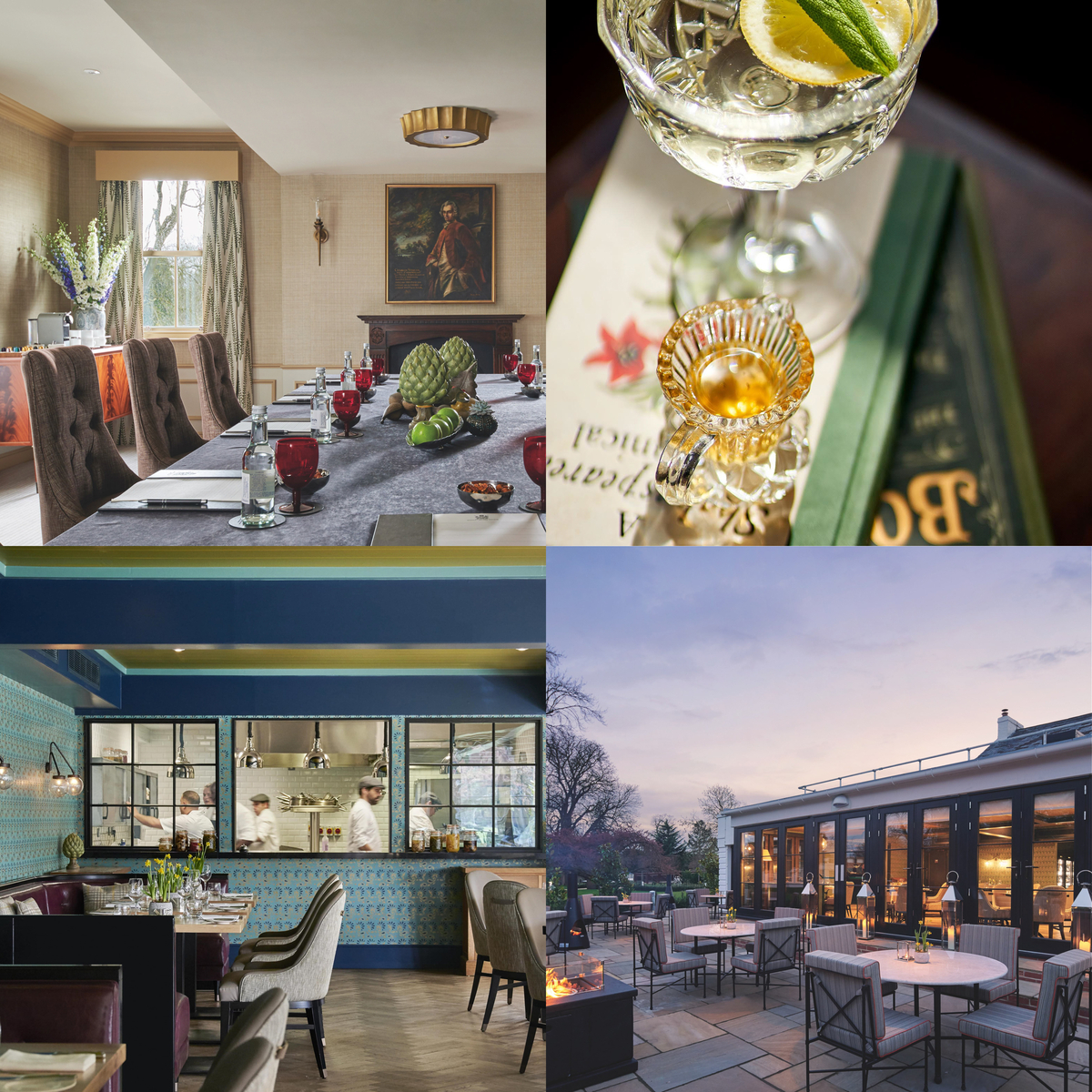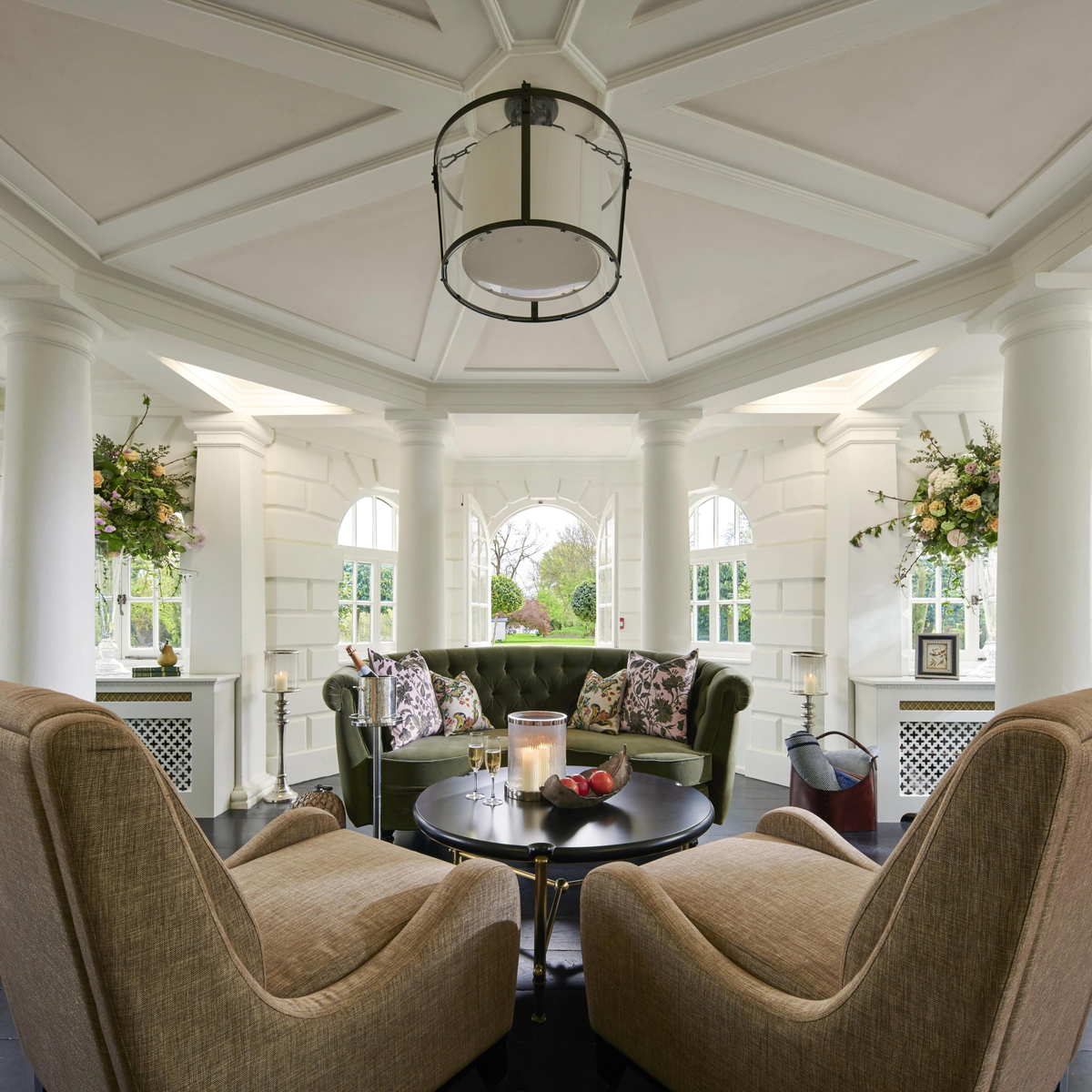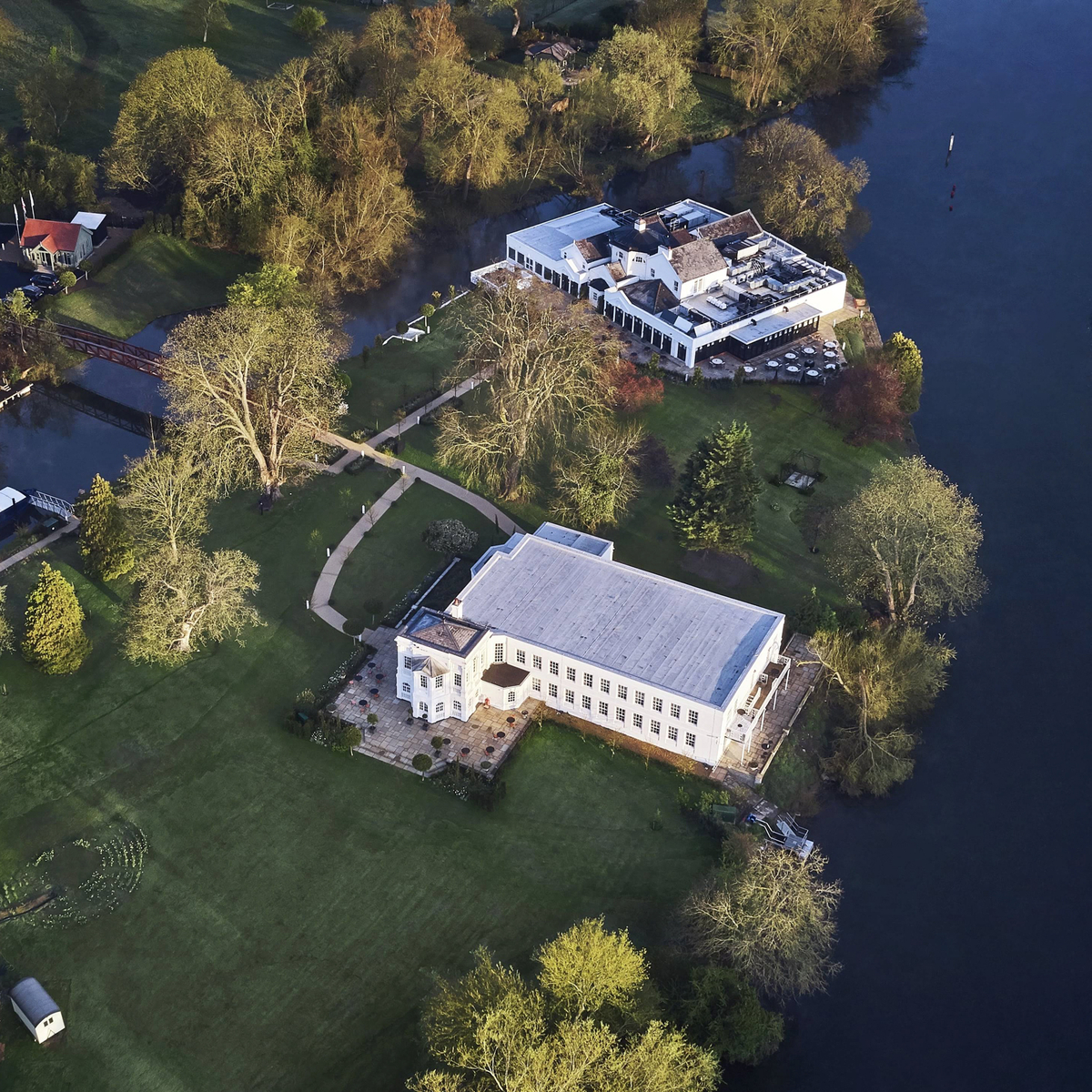As early as 1197, a group of monks settled near a small fish-shaped island in the Thames, next to the village of Bray. Monkey Island, as it became known, gradually grew into a seven-acre plot when detritus from the 1666 Great Fire of London was dumped there by barge. In 1723, the third Duke of Marlborough purchased Monkey Island to use as a fishing retreat. He commissioned Palladian architect Robert Morris to build a Fishing Temple and an octagon-shaped Fishing Pavilion, which would be used as a home. Lined with chestnut, lime, and walnut trees, and anchored by bushy green lawns and robust gardens, the stately building soon included murals by the French artist Andien de Clermont, which depicted monkeys in all manner of play.
After the duke’s death, the estate was sold and refashioned into an inn. When a footbridge was added in the mid-1950s, linking it to the mainland, Monkey Island became a cosmopolitan hideaway, hosting raucous monarchs, aristocrats, authors, and artists. H. G. Wells, Edward Elgar, and Princess Margaret were among its storied guests.
Today, the estate known as Monkey Island Bray has emerged from a meticulous three-year overhaul, and it includes 41 glossy bedrooms and suites, alongside six spacious, stand-alone cottages, a restaurant, ballroom, and two bars. Local ordinances prevent any further development, and so Monkey Island Bray’s serene spa is housed on a custom barge, tethered alongside the banks of the Thames.
And, most conveniently, it’s only a 49-minute drive from Marylebone. The neighboring village of Bray will ensure that visitors are well fed, thanks to its Michelin-starred restaurants including Heston Blumenthal’s Fat Duck and the Roux family’s Waterside Inn. Idyllic for weekend getaways, weddings, and family gatherings, Monkey Island Bray offers the buttoned-up service and luxe amenities required for the international set, with just the right dose of reserved English hospitality.
Bridget Arsenault is the London Editor for AIR MAIL

